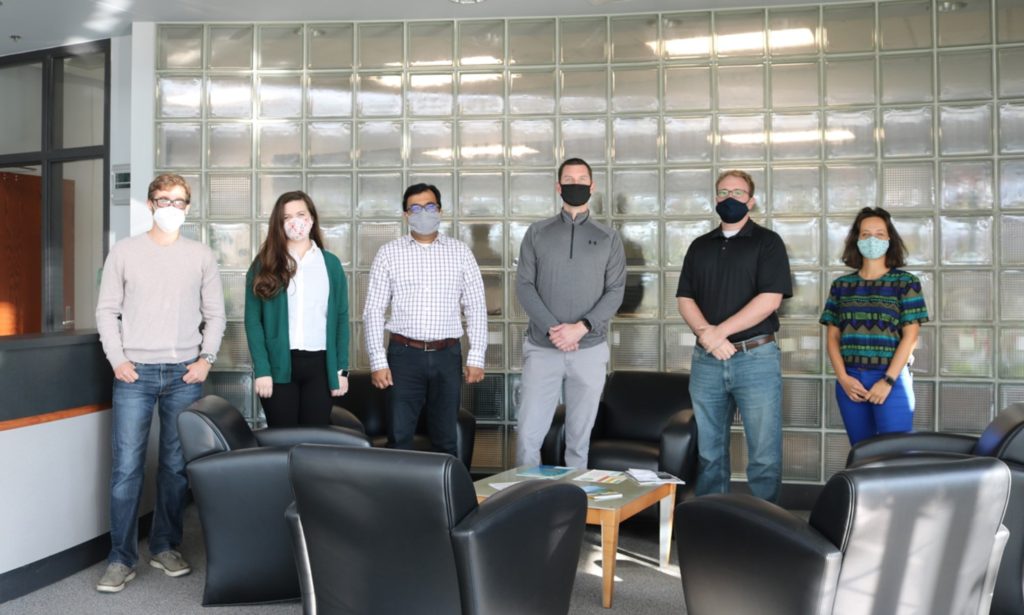ASBTDC client Nanomatronix has received a $225,000 award through the National Science Foundation’s Small Business Technology Transfer Program.
Nanomatronix uses nanotechnology, microelectronics, and biotechnology to provide solutions for the healthcare, energy, and defense industries. The team has built a brain-based microfluidic organ-on-chip device to study the long-term effect of traumatic brain injuries and other neurological diseases.
The Phase I award from NSF will be used to improve the technology and develop a commercially viable prototype.
Dr. Kartik Balachandran of the University of Arkansas, Fayetteville, will serve as the research institution subaward on the project. His laboratory investigates the role of mechanical forces on physiology, which includes research into employing tissue engineering techniques to study how traumatic brain injury affects the blood-brain barrier.

Market Need
Traumatic brain injuries, or TBI, are disruptions to the normal function of the brain caused by external forces such as a blow or jolt to the head. According to the Centers for Disease Control, an estimated 1.5 million Americans sustain a TBI each year, resulting in 50,000 deaths and nearly 100,000 people who experience long-term disability.
“Extensive research has focused on injury to the brain, but there is a need for research regarding the dysfunction and breakdown of the protective barrier function of the blood-brain barrier. When the blood-brain barrier breaks down due to traumatic brain injury, the likelihood of developing neurological disorders such as Alzheimer’s disease, Parkinson’s diseases, epilepsy, and dementia increases,” said Dr. Gage Greening, chief technology officer for Nanomatronix and principal investigator on the STTR project.

Organ-on-a-Chip Platform Solution
Nanomatronix is addressing this need by building the brain-based microfluidic “organ-on-chip” device.
“This device is a three-dimensional, flexible microfluidic device that integrates cells and fluid flow in order to mimic brain tissue and brain vasculature. It will be used to analyze the long-term effects of traumatic brain injury and other neurological diseases on cells and tissue,” said Greening.
The Project
Nanomatronix will be working to advance the design and development of the organ-on-chip in order to make commercialization viable.
“This grant seeks to improve the technology to make it more amenable to commercialization, i.e. making the tech user-friendly for end-users and instrumenting sensors for non-invasive readouts,” said Balachandran.
“Using this device, we will study the impact of traumatic brain injury on the blood-brain barrier, which is a highly-selective semipermeable border that prevents solutes in the circulating blood from crossing into the extracellular fluid of the central nervous system where neurons reside. In other words, the blood-brain barrier is a vital barrier between the blood vessels and the brain,” Greening said.
The Team
Nanomatronix has a team of experienced and cross-functional individuals with backgrounds in biomedical engineering, tissue engineering, chemical engineering, and microelectronics. Chief Executive Officer Dr. Matt Leftwich has successfully led several technologies through the SBIR/STTR programs with a high rate of commercialization.
Parker Cole, chief scientific officer, has experience with SBIR/STTR programs of several agencies and leads Nanomatronix’s technology and customer discovery efforts. As the company’s CTO, Dr. Gage Greening helps lead technology development efforts in Nanomatronix’s Biotechnology and Microelectronics strategic business units.
Nanomatronix is partnering with Balachandran from the Department of Biomedical Engineering at UA Fayetteville. Balachandran’s team of graduate students and postdocs will be responsible for integrating brain cells into the three-dimensional brain-based organ-on-chip. Nanomatronix will focus on making the technology more user-friendly for end-users and managing technology transfer.
The company is also partnering with the University of Arkansas GENESIS Technology Incubator. Support for the commercialization and development of this project is also provided by the Arkansas Research and Technology Park and the Arkansas Technology Development Foundation.
ASBTDC Assistance
Nanomatronix benefited from ASBTDC proposal preparation tools and market research services for its NSF STTR application.
“Our ASBTDC market research binder contained valuable information on treatments of TBI symptoms, the FDA approval process, TBI therapies under development, blood-brain barrier technologies and organ-on-chips market,” said Cole.
Advice for Prospective NSF STTR Applicants
“A big portion of an NSF-funded project is proving commercialization potential. I suggest talking to as many potential end-users as possible before applying to begin to clarify a beachhead market,” Greening said.